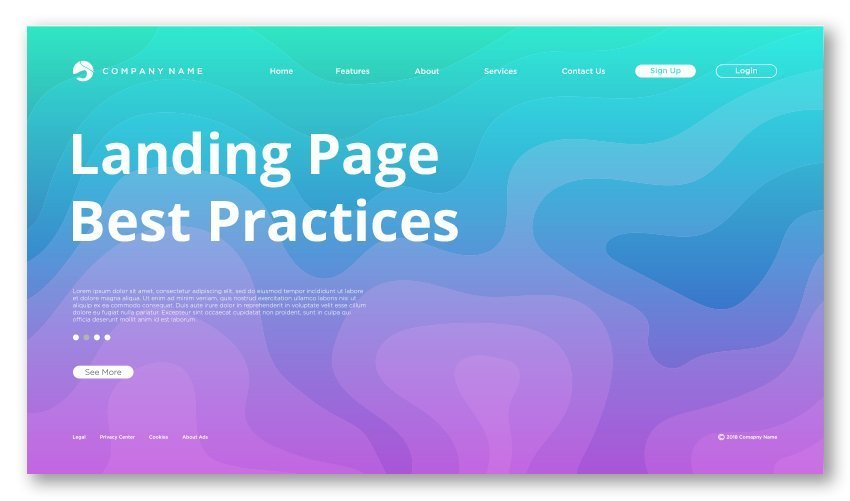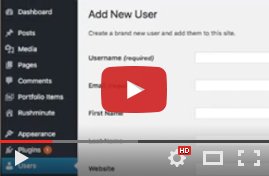Landing pages are key to growing your small business. More important than blogging and social media, landing pages are where the rubber meets the road by turning your prospects turn into customers.
But making effective landing pages isn’t easy. Why? Because every person who visits your landing page knows you want their email address, positive review or money.
And they want you to earn it.
Let’s take a look at some landing page best practices that’ll make it easier for you to “shrink the trust gap”.
Hold Up: Just what is a landing page?
A landing page is any web page a visitor can “land” on after clicking a link in a Google search, a Facebook ad, or link from any other website.
When it comes to marketing your small business, a landing page has a specific goal: to convert a prospect into a new lead or customer. And the conversion can come in different forms: a new subscriber to your blog, setting an appointment or completing an online purchase.
For small B2B service businesses, the most common type of landing page is a lead generating landing page. Its purpose is to capture visitor information – name, email, phone number – to add to a database for future marketing purposes.
Lead Gen Best Practices
In order to get the most our of your lead generating landing pages, here are some best practices to boost your conversion rates:
1. Be Bonehead Simple
A landing page is a blunt instrument, so it’s best not to get too clever with them. Keep the design, content and message simple.
This may mean your landing page doesn’t look like the rest of the pages on your website. That’s okay. They exist to do one thing: capture visitor information.
So, to have an effective landing page, remove every element on your landing page that isn’t necessary; fancy design elements, too much text, and unrelated content will distract your visitor from scanning your page, grasping your offer and filling out your form.
2. Have a Call to Action
Landing page visitors should know instantly what you’re asking them to do. Do you want them to subscribe to your podcast? Do you want them to schedule an appointment? Are you offering a free trial? Whatever you do, make sure it’s easy for them to understand your what you want them to do and what they’re going to get.
3. Minimize the Form
Here’s the deal: make the amount of information you’re requesting in your landing page form equal the value of what you’re offering. A form with too many fields will turn off most site visitors – which defeats the whole purpose – so only ask for the most crucial information and nothing more.
If you are looking for new subscribers, only ask for a name and email address. If you’re offering a free e-Book, ask for the business name and phone number, but don’t overdo it. You can always request more information down the road as the site visitor shows interest and engagement with you throughout their “buyer journey”.
4. Offer Something of Value
Site visitors aren’t dummies. They’re not going to give you personal information or money unless you give them something they want. In marketing terms, that something is called a lead magnet.
Here are some example lead magnets:
- E-book
- Whitepaper
- Free Webinar
- Free Consultation or Demo
- Discount or Coupon
The key is to offer something of value that’s appropriate and attractive to your target audience in order to boost customer attraction, conversion or retention.
5. Give Social Proof
People are social creatures and look to others to validate your company. If someone has tried your products or services and are happy, satisfied customers, your prospects will assume they’ll have the same good experience.
In order to bridge the trust gap between a prospect and your company, provide social proof on your landing page – either a testimonial or, at a minimum, links to your social media pages.
6. Be Beneficial
Last, but not least, your landing page must do two two things:
- describe what they’re going to get in exchange for their info or money
- convince them they will receive unique benefits
For example, if you’re offering a free eBook, describe what’s contained in the eBook and how it will help them build their knowledge or skills. The benefit to them isn’t that you’re an expert, but that you’re helping them address a pain point. It’s the benefit you offer that encourages them to think beyond the immediate benefits – and positions your company as a potential long term match.
In Conclusion
The reason why landing pages are key to small business success is because they offer something of value to encourage a site visitor to trust you. By building a lead generating landing page, your site visitors will be enticed by a useful, relevant, and exciting offer that persuades them to work with your business.
And what small business website owner wouldn’t want that?
________________
ABOUT THE AUTHOR
Robbie Moore is the founder of Rushminute, a digital marketing agency in Lincoln, Nebraska. With 20+ years of experience in digital marketing, Robbie has worked with dozens of companies and organizations, large and small, around the globe. He also writes extensively about design, development, and business in general.





